Today started out differently than yesterday. It was still blue skies and beautiful, but it was also windy and much colder for it. After breakfast we went to the lab to start getting some of the accelerometers ready for deployment. These are little sensors that measure movement, so Cory can see when and how the squirrels are moving around, both in their burrows and above ground. They have a place where you can plug them in to get the readings and to charge them, but this has to be covered when they are with the animals, so that portion of the device was taped with a special tape, then the entire device was encased in a plastic tubing that was then heated with a mini butane blow torch so that the tubing could be crimped and sealed. From there, the accelerometers were wired and then epoxied to a special zip tie encased in a black rubber tubing. The zip ties become the collars for some of the squirrels we will catch. The process reminded me that science is a crazy mix of super cool technology (the accelerometers) and arts and crafts (the tape, tubing, epoxy).
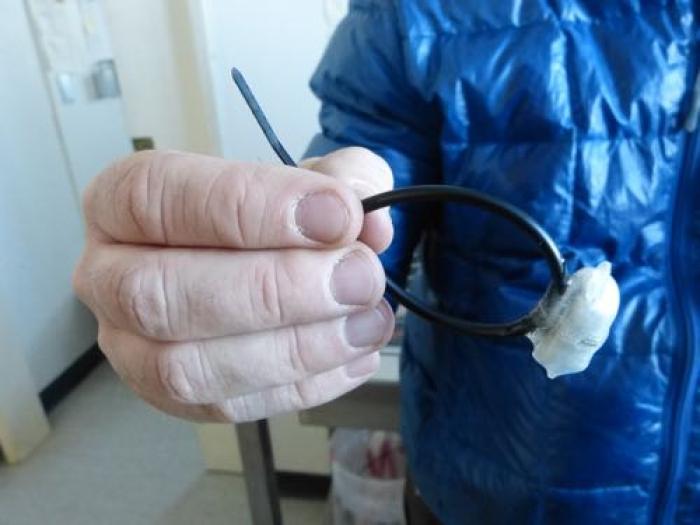
Once we finished this, we loaded the truck up with 80 wire traps and drove to Atigun, one of our two field sites. The wind was amplified here, and it was very cold. My feet are always cold here, but I was wearing my bunny boots, and they stayed warm enough, but my hands were cold quite quickly. We emptied all of the traps from the back of the truck and I was surprised they did not blow away in the strong wind. We started out by bringing the traps to an area where we would be able to set several later on. Helen drove the truck to a place where she could park safely nearby, and Cory and I used light plastic sleds to move the traps, thinking it would be the easiest way to move several at once. We were wrong. The wind was too strong and the sleds kept tipping over. It took much longer than it should have, and it was frustrating as I made very slow progress. There were also patches of deep snow that I had to walk through at times, which also slowed me down. But when I arrived, even my hands felt warm again.
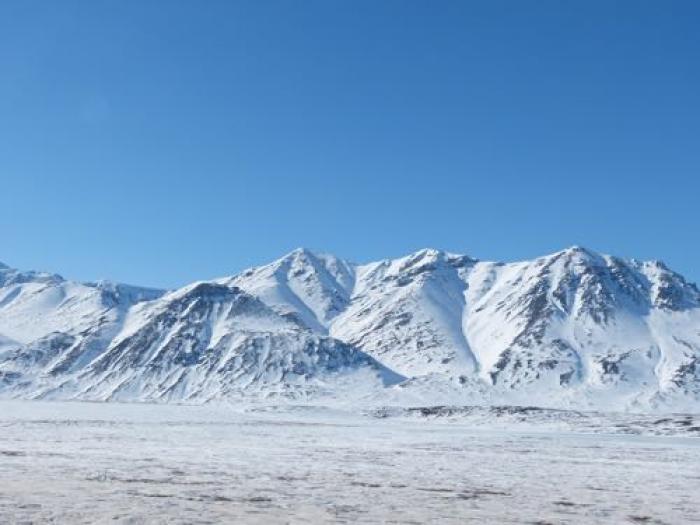
The second round included Cory and Helen wearing the "schleppers", the name given over to the backpack-like device used to carry many traps at once, and all of us carried some additional traps by hand. This trip was even harder in some respects, as we walked further, the snow was deeper and the wind felt stronger, working against me. My arms also got tired faster than I expected. And my hands got cold again as I carried the traps. But by the time we walked back, my hands were warm again. An interesting mix of sensations. This time I walked back with the empty schlepper.
At this point, we hadn't seen any ground squirrels yet, and Cory said we wouldn't, as they do not spend much time above ground when the weather is bad, including this type of wind. So, we didn't set any traps today. We left them in the stacks we brought out and will go back tomorrow to set them. There were only a few traps left at this point and Cory walked them out while Helen and I got the truck and loaded it back up with the sleds and our packs.
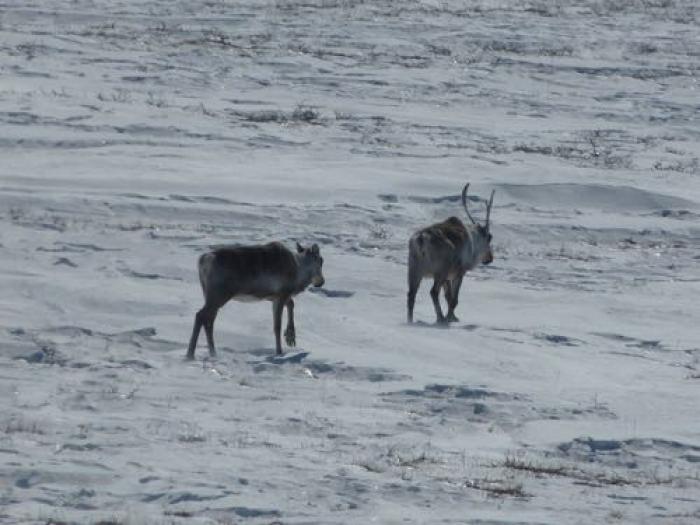
On the drive back to Toolik, we spotted several caribou, as well as a red fox. I was able to get some photos of the caribou, as Helen turned around to give me a better view. I also got a sort-of photo of the fox, and if you squint carefully and look towards the middle righthand portion of the photo, you should see it.
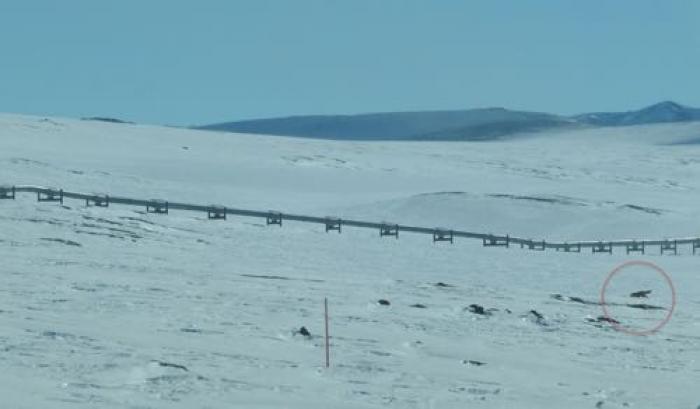
Back at Toolik we ate lunch and spent the afternoon readying some more accelerometers. I also got a look at all of the GoPro stuff that Cory brought, and now need to think of how best to use it.
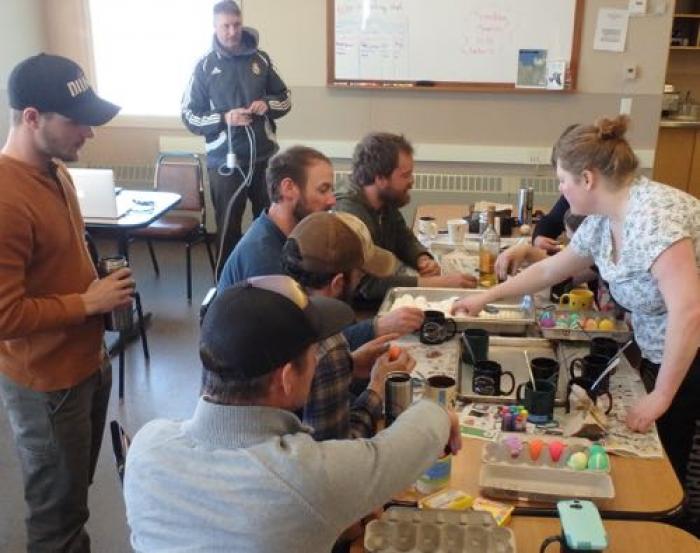
After dinner we dyed Easter eggs and everyone got a chance to show off their skills. Looking forward to the egg hunt and Easter brunch tomorrow! 
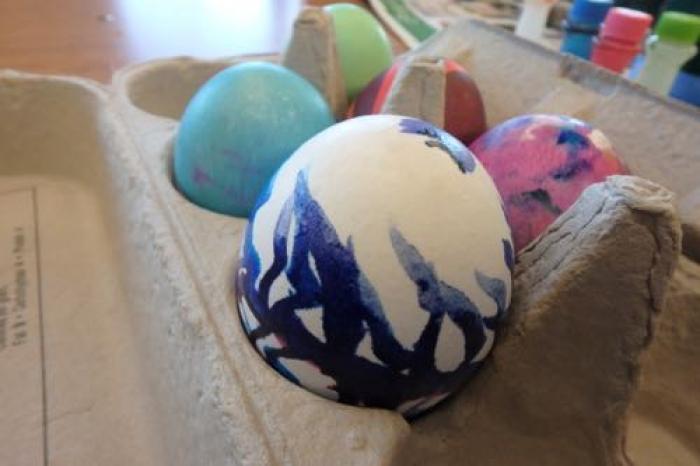


Comments